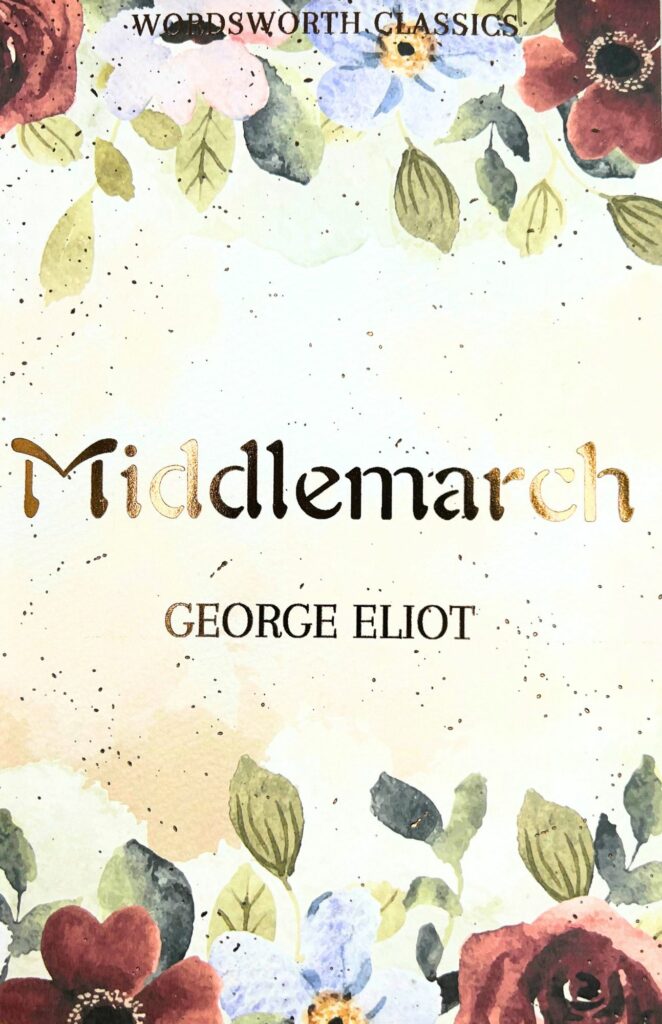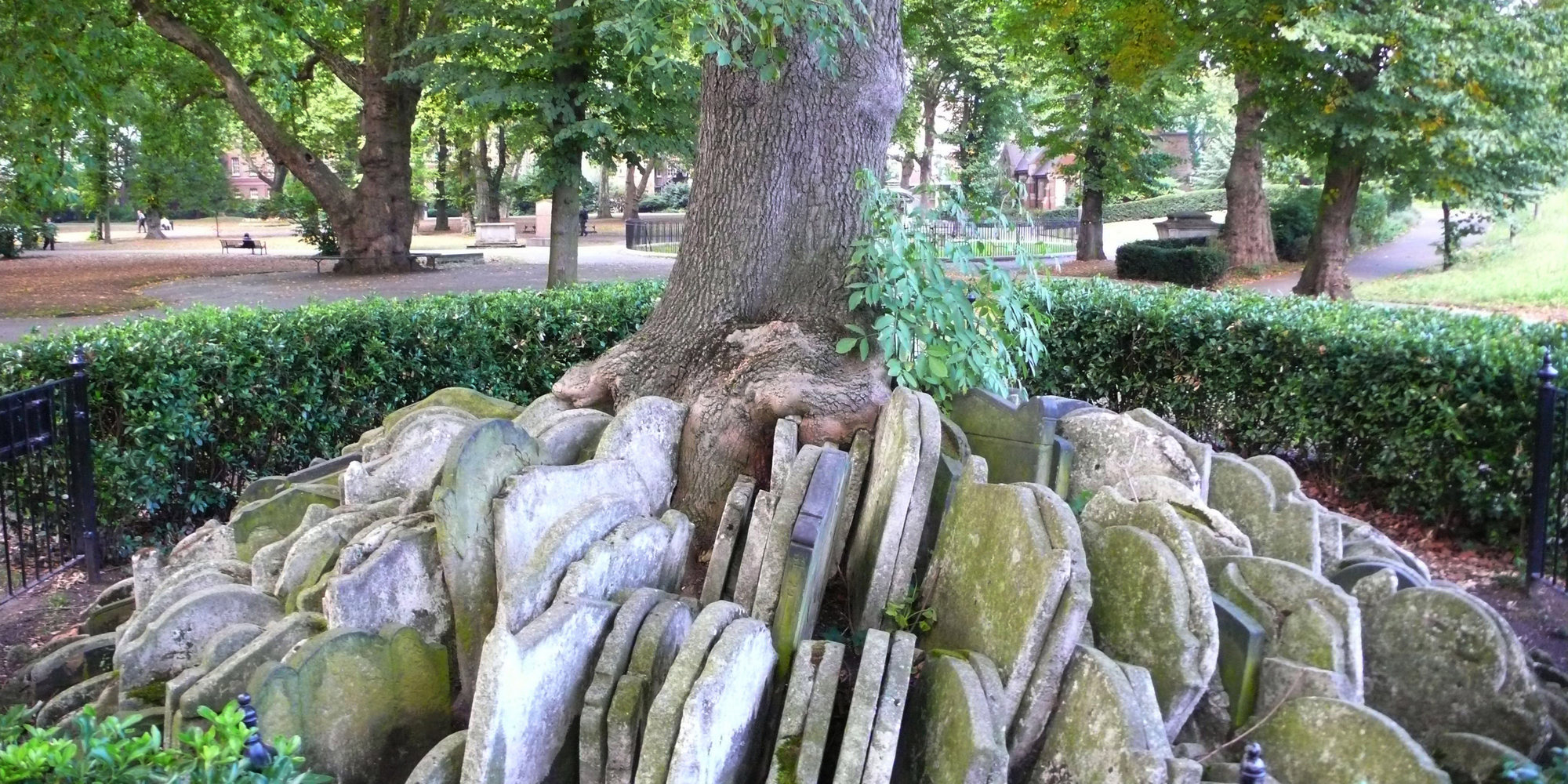
Book of the Week: Far From the Madding Crowd
Far From the Madding Crowd has disaster and desperation within it, but it remains one of Hardy’s most optimistic novels. Sally Minogue considers why.
To begin at the end – Far From the Madding Crowd is one of Thomas Hardy’s happier novels, which is to say, it ends happily. This being Hardy, there is much unhappiness along the way; yet even while it contains the desperate death of a young woman and newborn baby, a murder and attempted suicide, betrayal inside and outside marriage, and the usual Hardyesque havoc wrought by nature or accident, it turns finally in a benevolent direction. This is in part to do with where its writing and publication fall in Hardy’s life and his development as a writer.
Far From the Madding Crowd is Hardy’s fifth written (fourth published) novel, but arguably his first major work, and it comes at a significant juncture. The years from 1870 to 1874 (when Madding Crowd would be published) see him poised uncertainly between his work as a jobbing architect and his prospects and ambitions as a writer, and they contain several decisive events in his life. At the start of 1870, his thirtieth birthday approaching and one unpublished ‘failed’ novel (The Poor Man and the Lady) behind him, Hardy is working on a second, Desperate Remedies. His early love, his cousin Tryphena, has moved to London and Hardy is withdrawing from the relationship. In March he contracts with his sometime employer, architect John Hicks, to work on a church restoration in St Juliot, Cornwall. Here he meets Emma Gifford (who after a protracted courtship would become his wife), and she encourages his writing ambitions. In March 1871 Desperate Remedies is published by William Tinsley in three volumes: Hardy has his first novel out in the world. He loses no time and, in spite of the competing demands of his architectural work, by August 1871 Under the Greenwood Tree is completed and eventually published in June 1872 in two volumes, again by Tinsley. Tinsley now offers his increasingly successful novelist the opportunity of a serialised novel for the handsome sum of £200 and by August of 1872 Hardy sends off the first instalment of A Pair of Blue Eyes.
The speed of writing and publication demonstrated here would bewilder the contemporary novelist and they remind us of Hardy’s hard work and commitment (he was also completing architectural contracts). The offer of serialisation of A Pair of Blue Eyes also enabled him, as it did other novelists, to publish early parts of a work before later parts were completed or even imagined. Hardy at any rate now felt sufficiently successful in his writing career to ask Emma’s father for formal permission to marry her – which was summarily refused. This however seems only to have stoked the fires; the two were between themselves unofficially betrothed, and Emma’s residence at her brother-in-law’s in St Juliot rather than at her parents’ home meant that the relationship could flourish. It was at this point, late in 1872, that Leslie Stephen, editor of the prestigious Cornhill Magazine, approached Hardy with the offer of serialising any new novel he might have in progress. This was to be Far From the Madding Crowd.

Hardy’s Cottage, Bockhampton
So this new novel began on an upsurge of increasing success and recognition as a writer, with accompanying financial rewards, alongside the hopeful beginnings of his life partnership with Emma, who at this point was both strongly supportive of and closely involved in his work. Furthermore, much of the novel was written at his old family home of Bockhampton, surrounded by the rustic life that would be so significant in Far From the Madding Crowd. Hardy went back to the wellsprings of his imagination, and the story he had sketched to Leslie Stephen involving ‘a young woman-farmer, a shepherd, and a sergeant of cavalry’ now grew into what is generally regarded as his first fully mature novel. The serialisation began in January 1874, the writing of the whole was finished in July, he and Emma were married in September, and the complete two-volume novel was published in November. Hardy, the novelist and the man, was finally launched.
That initial idea of ‘a young woman-farmer’ illustrates the unusual way in which Hardy was already thinking as a novelist, and the highly convincing portrait of Bathsheba growing into her role as an independent accomplished woman running her own business, responsible for the lives of others, and able to respond to the difficult demands made of her is still a radical representation for the 1870s. Here is ‘the first public evidence of [her] decision to be a farmer in her own person and by proxy no more’ as she makes her entrance into the Corn Exchange:
Among these heavy yeomen a feminine figure glided – the single one of her sex that the room contained. She was prettily and even daintily dressed. … It had required a little determination – far more than she had at first imagined – to take up a position here, for at her first entry the lumbering dialogues had ceased, nearly every face had been turned towards her, and those that were already turned rigidly fixed there. …
But if she was to be the practical woman she had intended to show herself, business must be carried on … and she ultimately acquired confidence enough to speak and reply boldly to men merely known to her by hearsay. Bathsheba too had her sample-bags and by degree adopted the professional pour into the hand – holding up the narrow grains for inspection, in perfect Casterbridge manner. (Chapter 12)
Bathsheba has already prepared herself for this dramatic demonstration of her role, in the smaller arena of her own farm, dismissing the untrustworthy bailiff and taking the finances of the farm into her own hands, through the ceremony of payment to all her workers in the old hall:
“Now mind you have a mistress instead of a master. I don’t yet know my talents in farming, but I shall do my best, and if you serve me well, so shall I serve you. … I shall be up before you are awake, I shall be afield before you are up, and I shall have breakfasted before you are afield.” (Chapter 10)
Bathsheba is of course a country girl: being afield early is nothing new to her. If our first sight (through Gabriel Oak’s eyes) is of her admiring herself in a mirror, the next views are of her caring for a new calf, riding astride a horse with athletic abandon, and the most prosaic, milking a cow. She is well fitted to be a farmer. What makes Bathsheba an even more complex and interesting character is that her emotional progress doesn’t keep pace with her social and economic capability. This might suggest that Hardy is thinking in the end in stereotypical gender terms. But he shows similar emotional flaws in both Sergeant Troy and farmer Boldwood. Gabriel Oak is the only model of maturity, rising as he seems to do to every occasion with compassion and selflessness, but never renouncing his own independence of spirit. Gabriel has the resources from the start to withstand first the blows of accident which nature deals him, and then the sufferings of the heart which he has to school himself to in his love of Bathsheba. She must learn that same resilience and ultimately selflessness through a series of hard knocks, many of them engendered by her own actions. But eventually she does rise to them, as she has risen to the difficulties of being a ‘young woman-farmer’. The novel is at its centre a story of her moral and emotional development, but one told not in a moralistic fashion. Hardy always has compassion for his spirited heroine, and whenever she acts impulsively (sometimes mistakenly, sometimes not) he shows her subsequent struggles with herself to understand the consequences of her actions and to try to either make up for them or learn from them.
A central, tragic moment of understanding comes for Bathsheba when she must confront the dead bodies of Fanny Robin and her child in the coffin – there under her roof because she feels some responsibility for Fanny as her former employee, and also because she has compassion for the dead woman and doesn’t want to leave her, dead as she may be, outside in the wagon. A lesser novelist would have shown Bathsheba either being wholly sympathetic to Fanny or wholly hostile (as she now suspects Fanny’s former relationship with her husband Troy), but instead we see her in conflict with herself:
Her tears fell fast beside the unconscious pair in the coffin – tears of a complicated origin, of a nature indescribable, almost undefinable except other than those of simple sorrow…
“O I hate them, yet I don’t mean that I hate them, for it is grievous and wicked – and yet I hate them a little! Yes, my flesh insists on hating them, whether my spirit is willing or no ……If she had only lived I could have been angry and cruel towards her with some justification, but to be vindictive towards a poor dead woman and babe recoils upon myself. O I am miserable at all this!” (Chapter 43)
Bathsheba is to become even more miserable, as Troy, after pronouncing Fanny his true wife in the eyes of heaven, tells Bathsheba: ‘“You are nothing to me – nothing … A ceremony before a priest doesn’t make a marriage. I am not morally yours.”’ Paradoxically Troy discovers his better feelings through his shunning of Bathsheba here. And Bathsheba must consequently suffer her own dark night of the soul.
Bathsheba heads outside ‘along the dark road, neither knowing nor caring about the direction or issue of her flight’, and, this being Hardy, and also befitting our country girl, she flings herself headlong into the natural world. Finding ‘a brake of fern’, she ‘could think of nothing better to do with her palpitating self than to go in there and hide’. Sinking on a bed of ‘fronds and ferns’, she pulls ‘armfuls’ around her – and goes to sleep. This foreshadows poor Tess taking shelter in the woods, with not such an innocent fate. But this is early Hardy, and Bathsheba, essentially as artless as Tess, is allowed to be unharmed except for the woes that have driven her there. This passage calls to mind a similar sequence in George Eliot’s Middlemarch. Eliot’s heroine Dorothea could not be more different from Bathsheba, and her refuge and place of despair is domestic, homebound; but her desolation stems from a similar cause. She thinks – mistakenly as it turns out – that the man she thinks she loves has given his heart to another. There are complications since the ‘other’ is married, and Dorothea is in the midst of trying to help her and her husband. But the distress is markedly similar, except that Dorothea imagines herself rejected, whilst Bathsheba really is rejected.
Here is Dorothea:
She lay on the bare floor and let the night grow cold around her; while her grand woman’s frame was shaken by sobs as if she had been a despairing child. ….
In the chill hours of the morning twilight, when all was dim around her, she awoke – … with the clearest consciousness that she was looking into the eyes of sorrow. … she was no longer wrestling with her grief, but could sit down with it as a lasting companion …
‘“What should I do – how should I act now, this very day, if I could clutch my own pain, and compel it to silence, …?”
She opened her curtains, and looked out towards the bit of road that lay in view, with fields beyond, outside the entrance-gates. On the road there was a man with a bundle on his back and a woman carrying a baby; in the field she could see figures moving – perhaps the shepherd with his dog. Far off in the bending sky was the pearly light; and she felt the largeness of the world and the manifold wakings of men to labour and endurance. She was part of that involuntary, palpitating life, and could neither look out on it from her luxurious shelter as a mere spectator, nor hide her eyes in selfish complaining.
Bathsheba is not quite so self-reflecting. Or to put it another way, Hardy does not lead his heroine to reflect in the same way that Eliot leads hers to do so. But both have a moment of understanding, a sort of epiphany but one that in each case is framed in very ordinary terms and in relation to the everyday world around them. Dorothea takes both comfort and a briskness about her own fate from seeing the endurance of working folk around her. Bathsheba wakes ‘with a freshened existence and a cooler brain’ to the sound of birds and beasts, and then to the plough boy leading her own team of horses:
They stopped to drink at a pond on the other side of the way. She watched them flouncing into the pool, drinking, tossing up their heads, drinking again, the water dribbling from their lips in silver threads. There was another flounce and they came out of the pond, and turned back again towards the farm. (Chapter 44)
Hardy’s close, knowing observation (which is also Bathsheba’s) and Eliot’s and Dorothea’s larger gaze both remind us of the power of the ordinary, of everyday human endurance, of the constant turn of the natural world, of the world outside ourselves. That is what saves both Dorothea and Bathsheba. Their gaze moves outwards, and in that they find their own inner resolve.
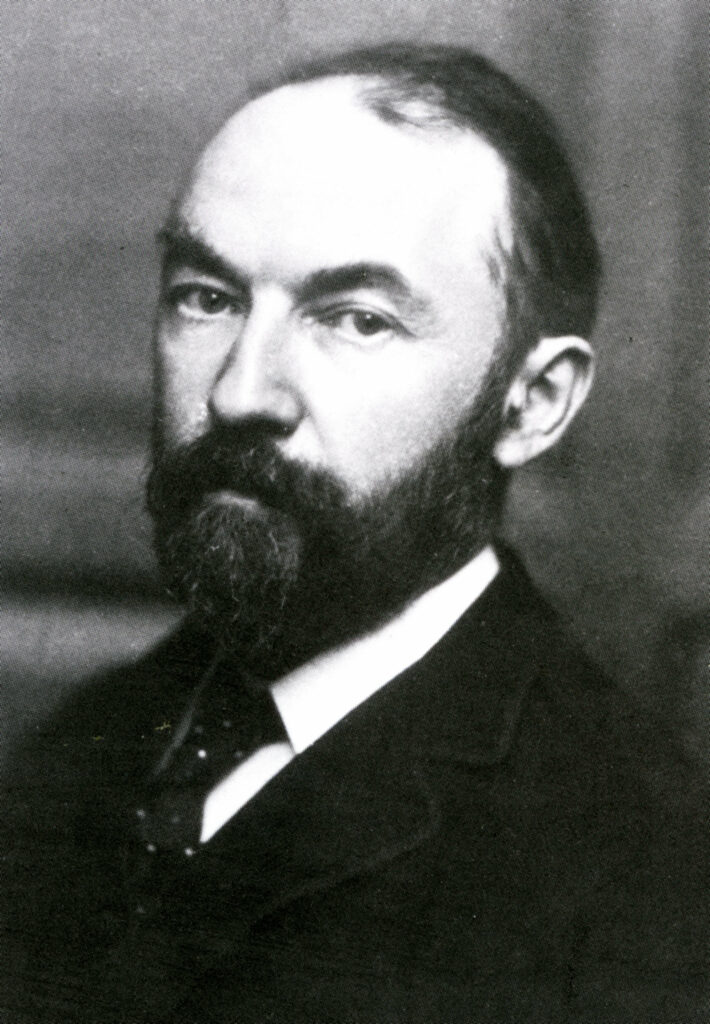
Thomas Hardy
Remarkably, George Eliot and Thomas Hardy were writing these novels – which are utterly different from each other – almost at the same time. Middlemarch was published in eight instalments between December 1871 and December 1872 (a new variation on serial publication, as Eliot wanted to preserve the length of certain chapters, so there were five two-monthly instalments, followed by three one-monthly ones). Far From the Madding Crowd, as we have seen, was published across the year of 1874. Beside Eliot’s magisterial work, Hardy’s seems, like Bathsheba herself, oddly defenceless. But what Hardy was doing was something Eliot could never have done. Those figures Dorothea spots in the distance – ‘perhaps the shepherd and his dog’ – are in the foreground in Far From the Madding Crowd. Dorothea has her epiphany by observing the shepherd. Gabriel Oak is that shepherd.
That is the source of the upturn towards happiness in Far From the Madding Crowd. Both Gabriel and Bathsheba work through their suffering and their coming together is, in the end, entirely natural. Dorothea too finds her happy ending. And as Eliot so wisely concludes her novel, ‘the growing good of the world is partly dependent on unhistoric acts; and that things are not so ill with you and me as they might have been, is half owing to the number who lived faithfully a hidden life, and rest in unvisited tombs’. In that same spirit Hardy called his novel after the lines in Gray’s Elegy:
Far from the madding crowd’s ignoble strife,
Their sober wishes never learned to stray;
Along the cool sequester’d vale of life
They kept the noiseless tenor of their way.
Unhistoric acts, a hidden ‘sequester’d vale of life’, unvisited tombs: this is the stuff of both Eliot’s and Hardy’s fiction. If Eliot gives the panoramic view, Hardy brings us up close to those figures in the landscape. And in Far From the Madding Crowd some of them at least find a happy ending.
Thomas Hardy’s novels, including Far From the Madding Crowd, are published by Wordsworth, as is George Eliot’s Middlemarch.
My blog on Middlemarch can be found here: Middlemarch
Main image: The Thomas Hardy tree. Hardy as a young architect in the 1860s was involved in exhuming graves in the Old St Pancras churchyard to make way for the new Kings Cross-St Pancras station and railway. The headstones were piled around this tree which became known as the Hardy Tree. Sadly the tree fell very recently. Credit: Jerome Flynn / Alamy Stock Photo
Image 1 in text: Hardy’s Cottage, birthplace of Thomas Hardy, Thorncombe Wood, Higher Bockhampton, near Dorchester. Credit: Ian G Dagnall / Alamy Stock Photo
Image 2 in text: The young Thomas Hardy. Credit: Pictorial Press Ltd / Alamy Stock Photo
For more information on Thomas Hardy, visit: The Thomas Hardy Society
Books associated with this article
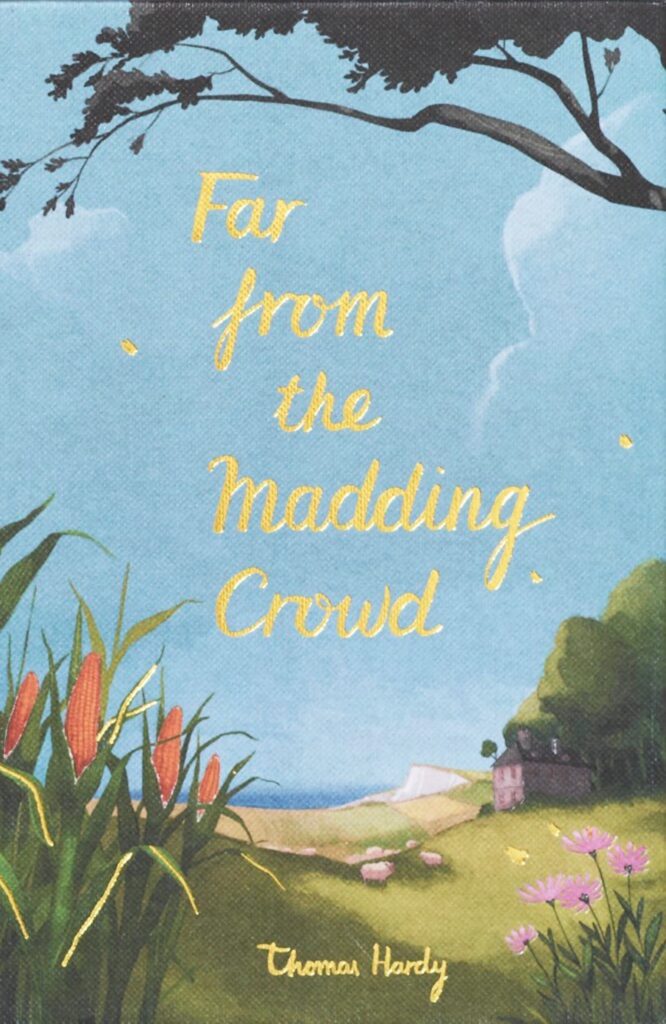
Far From The Madding Crowd (Collector’s Edition)
Thomas Hardy
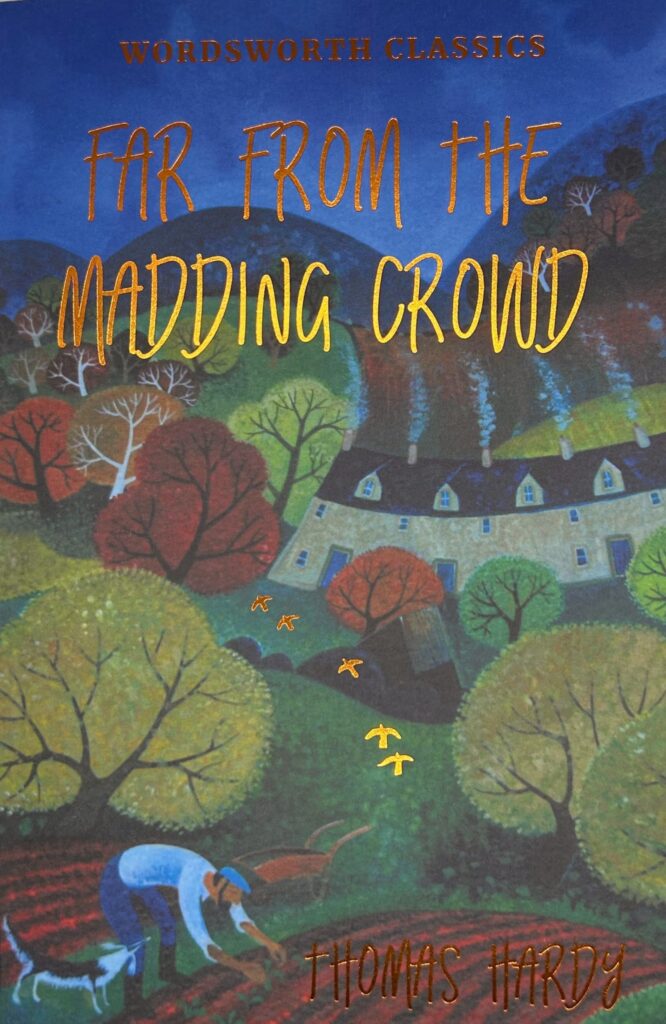
Far from the Madding Crowd
Thomas Hardy
